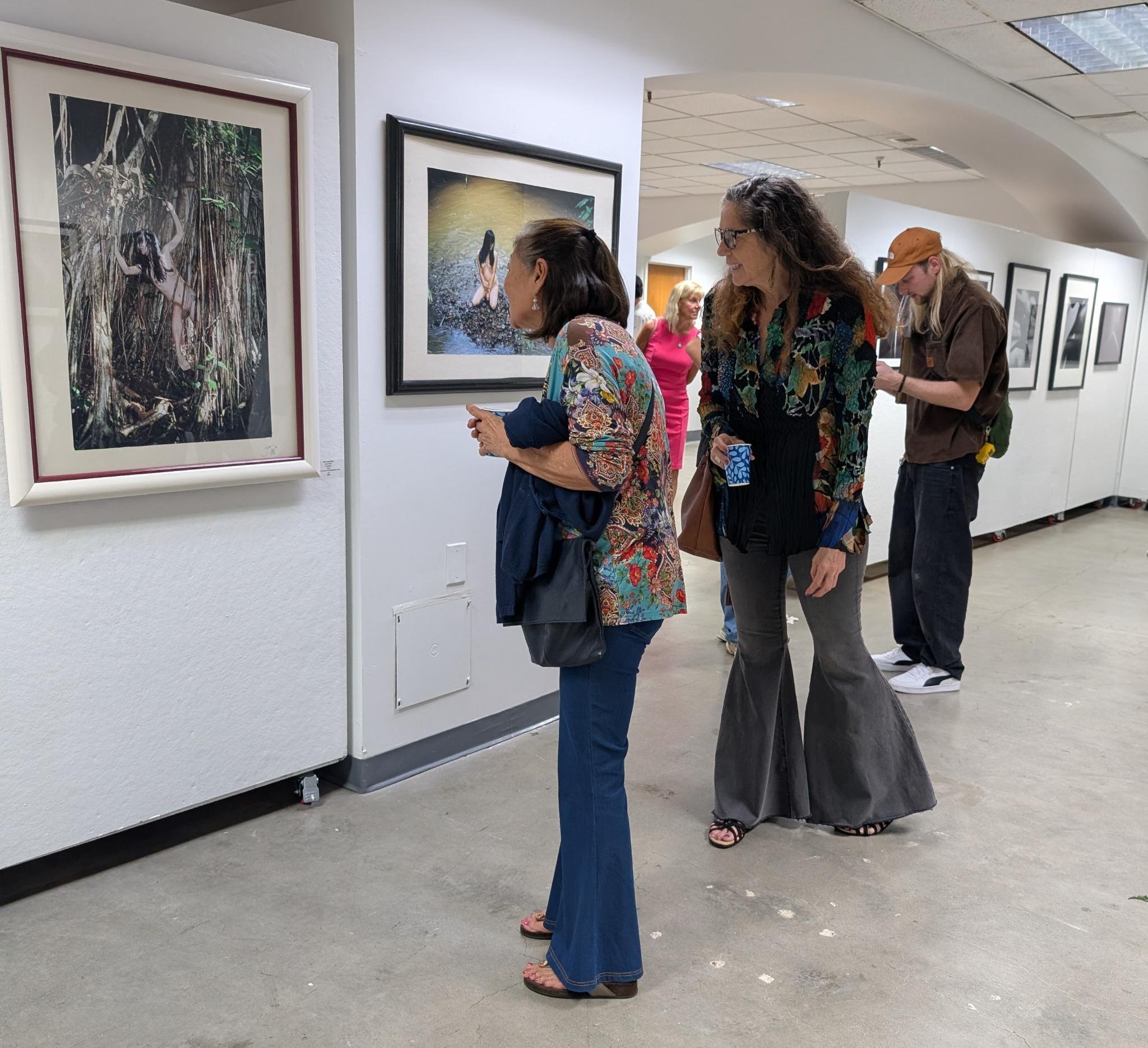Title: Feral Roots
Year: 2024
Medium: Body as Sculpture, Performance Art, 35mm Film Photography
Materials: The female form in a natural environment.
Inspirations: Patty Chang, Ren Hang, Genie
Description: A performance art photo series using the female body to explore the relentless passage of time: a symbolic reflection on the implication of aging for women.
Unraveling Feral Roots:
On Aging, Identity, and the Female Form
Every single being on this planet is beholden to the passage of time: an unrelenting force that shapes life from birth, growth, aging, deterioration, to eventual death. It leaves nothing untouched, neither tangible nor intangible. And yet, this natural process burdens women with societal constructs that equate their value with youth and beauty, framing aging as a decline rather than a transition. This concept of "aging out" imposes limitations that disconnect women from the natural rhythms of their bodies. While society allows men to age with grace, women face pressures to resist time’s effects, perpetuating the disassociation between their physical realities and identities.
Feral Roots explores the animalistic truth behind the passage of time using the female form. Utilizing the concept of body-as-sculpture, the photo series examines the complexities of time’s passage for women, particularly as it pertains to femininity and societal expectations. With body-as-sculpture, the human body is treated as malleable material, akin to clay or marble used for permanent sculptures. But employing the body as material is inherently ephemeral, mirroring the impermanence of time and the transience of life.
The nude female body serves as a means to explore themes of identity, vulnerability, and resilience.
Nudity challenges societal norms surrounding beauty, objectification, and autonomy, ultimately supporting the reclamation of identity. The series draws inspiration from the late photographer Ren Hang, whose provocative nudes evoke a sense of surreal timelessness, portraying the naked body with a natural and delicate fragility. Similarly, performance artist Patty Chang’s use of the body as both subject and storyteller informed the series’ exploration of physicality as a narrative tool, weaving personal experience with broader societal critique.
Behind Feral Roots is also the story of a child named Genie, who was famously dubbed “the feral child” when authorities discovered her. Genie was severely abused by her deranged father, who strapped her to a straitjacket as a toddler and brutally beat her. To date, her case remains one of the most extreme records of child abuse. Deprived of human touch and interaction, Genie was never taught to speak, eat, or walk. She exhibited animalistic qualities, barely able to chew, swallow, or extend her limbs, urinating and defecating on herself when stressed. When linguists attempted to teach her language, they learned that the critical window for speech acquisition closes around age 10, but Genie was already 13 when they found her. Her story raises profound questions about humanity: what separates animals from humans? Is it the ability to communicate through language?
Eventually, Genie was forgotten, as the sensation surrounding her story faded and other newsworthy events replaced her in the headlines. Still, her tragedy exposes a disturbing consequence of time’s passage, where certain damages become irrevocable, such as the inability to learn language or behave “like a human” after the window closes. Her isolation and deprivation parallel the societal treatment of aging women, who are cast aside when they no longer conform to idealized standards of youth and beauty. Feral Roots symbolically examines the tragic consequences of time for women: growing older. Just as Genie’s loss was deemed irreversible, society perpetuates the belief that there is a point in time when it becomes “too late” for women: when youth fades or the biological clock stops ticking.
At its core, Feral Roots is an ode to Genie, who, if still alive, would be in her late 60s today: an acknowledgement of the profound unfairness and cruelty she endured. The series portrays themes of trauma, torture, and entrapment, honoring Genie’s experience while serving as a symbol of the mental imprisonment women face. It reflects how women are plagued by the relentless passage of time and pressured to reverse its effects at all costs.
The series was shot on 35mm film in Nuʻuanu Pali, a natural setting adorned with aged banyan trees and a lush bamboo forest. Banyan trees can live up to 1,000 years under the right conditions and possess a sophisticated aerial root system that enables regeneration for centuries. Their enduring presence perfectly encapsulates transience and resilience, making it an ideal location to shoot. Photography was chosen as the medium for its ability to capture fleeting moments (time we can’t get back) embodying the ethos of the series. Unlike digital photography, film does not allow instant review to confirm whether the right moment was captured. Once taken, it’s final. The images are printed from the 35mm film negatives to preserve their original form when displayed for gallery viewing.
By placing the female body in this environment, the series juxtaposes nature with the societal construct of “aging out,” which confines and punishes women for a natural process. The female form is criticized for failing to conform to conflicting societal expectations: for not catering to the male gaze, for not being covered and ‘‘pure.” The choice to shoot nude was intended to communicate vulnerability and loss, reflecting the imprisonment created by the passage of time: a perceived jail cell constructed by societal norms.
Feral Roots challenges the viewer to confront societal pressures and reconsider aging as a natural cycle rather than a source of shame. While the pressures placed on women are uniquely tied to gender, the passage of time is an inescapable universal force. Even celestial bodies, like the seemingly indestructible planets in our solar system, are subject to the same impermanence as humanity, reminding us that time spares nothing: not even the stars.
To truly accept the passage of time, we must learn to see the beauty within it: not as something to fight against, but as a testament to life’s transience and grace. Women, like the banyan trees that thrive for centuries, deserve to age with dignity, free from the shame and limitations imposed by societal constructs.


